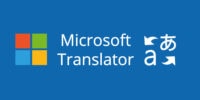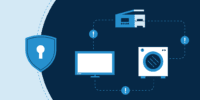Microsoft Active Directory is Crucial For Networking

Microsoft Active Directory plays a crucial role in network management due to its ability to streamline and enhance various aspects of IT administration. This article aims to explore why Active Directory is considered crucial in network management by discussing its centralized user and computer management, efficient resource management, enhanced security measures, scalability and flexibility, integration with other IT systems, streamlined IT administration, simplified group policy management, and high availability and disaster recovery capabilities.
By understanding the importance of Active Directory in network management, organizations can leverage its features to effectively manage their networks, optimize resource allocation, ensure data security, and simplify overall IT administration. This article provides an objective and impersonal analysis of why Microsoft Active Directory is an essential component for network management, highlighting its advantages and benefits for organizations of all sizes.
Key Takeaways
- Microsoft Active Directory streamlines and enhances various aspects of IT administration.
- Active Directory provides centralized user and computer management, simplifying the task of creating, managing, and deleting user accounts.
- It enables the implementation of group policies, ensuring consistency and enhancing network security.
- Active Directory safeguards network resources from unauthorized access by providing a centralized and hierarchical structure for managing user accounts, groups, and permissions.
Centralized User and Computer Management
Centralized user and computer management is a critical aspect of network management, and Microsoft Active Directory plays an indispensable role in achieving this by providing a unified platform for efficient administration, authentication, and authorization of user accounts and computer resources across an organization’s network infrastructure.
By centralizing user and computer management, Active Directory simplifies the task of creating, managing, and deleting user accounts, as well as granting and revoking access to network resources. This centralized approach eliminates the need for individual user and computer management on each device, reducing administrative overhead and improving efficiency.
Active Directory also enables the implementation of group policies, which allow administrators to define and enforce security settings, software installations, and other configurations across multiple computers simultaneously. This streamlines the management process, ensures consistency, and enhances network security.
Overall, Microsoft Active Directory is crucial for network management as it enables centralized control and efficient administration of user and computer resources within an organization’s network infrastructure.
Efficient Resource Management
Streamlined resource allocation and optimization is imperative for effective network administration, facilitating seamless operations and fostering a sense of efficiency and productivity.
Microsoft Active Directory (AD) plays a crucial role in achieving this objective. With AD, network administrators can efficiently manage and control various resources such as files, folders, printers, and applications within the network.
Through AD’s central management console, administrators can allocate and assign resources to specific users or groups, ensuring that authorized individuals have access to the necessary tools and information.
By implementing AD, organizations can also implement policies and permissions to regulate resource usage, ensuring that resources are utilized optimally and preventing unauthorized access.
This centralized approach simplifies resource management, reduces administrative overhead, and enhances overall network security and performance.
Enhanced Security Measures
Enhanced security measures in network management focus on two key points:
- Secure user authentication and access control
Secure user authentication ensures that only authorized users can access the network, preventing potential security breaches. - Protecting network resources from unauthorized access
Access control mechanisms further enforce restrictions on user privileges, allowing organizations to manage and monitor user access to different network resources, minimizing the risk of unauthorized access.
These measures are essential for maintaining the integrity and confidentiality of network data and resources.
Secure User Authentication and Access Control
User authentication and access control in network management is paramount to ensure the protection of sensitive information and prevent unauthorized access to resources, making Microsoft Active Directory a crucial component of network security.
Active Directory provides a centralized system for managing user accounts, allowing administrators to authenticate and authorize users based on their role and privileges. By implementing strong authentication mechanisms such as multi-factor authentication and smart card authentication, Active Directory enhances security by verifying the identity of users before granting access to network resources.
Additionally, Active Directory enables access control through the use of access control lists (ACLs), which specify the permissions granted to users or groups for specific resources. This granular control over user access ensures that only authorized individuals can access sensitive data, minimizing the risk of data breaches and maintaining the integrity of the network.
Protect Network Resources from Unauthorized Access
Safeguarding network resources from unauthorized access is essential for maintaining the confidentiality and integrity of sensitive information, requiring robust security measures and access control mechanisms.
Microsoft Active Directory (AD) plays a crucial role in this aspect of network management. AD provides a centralized and hierarchical structure for managing user accounts, groups, and permissions, allowing administrators to define and enforce access policies.
With AD, network administrators can assign specific permissions to individuals or groups, ensuring that only authorized users can access sensitive resources. Additionally, AD’s integration with other Microsoft services, such as Windows Server and Exchange Server, allows for seamless authentication and authorization processes across the network.
By leveraging AD’s features, organizations can effectively protect their network resources from unauthorized access, reducing the risk of data breaches and maintaining a secure network environment.
Scalability and Flexibility
Scalability and flexibility are key factors in understanding the significance of Microsoft Active Directory for network management as they allow for seamless expansion and adaptability of network infrastructure. With Active Directory, organizations can easily add or remove users, groups, and resources as needed, without disrupting the overall network functionality. This ensures that the network can grow and evolve alongside the organization’s needs.
In addition to scalability, Active Directory provides flexibility by allowing administrators to define and enforce policies across the network. This includes setting user permissions, access controls, and password policies, which can be customized to meet specific security requirements. Furthermore, Active Directory integrates with other Microsoft technologies, such as Exchange Server and SharePoint, providing a unified platform for managing multiple network services.
The following table highlights the benefits of scalability and flexibility in Microsoft Active Directory:
| Benefits | Description |
|---|---|
| Seamless network expansion | Allows for easy addition or removal of users, groups, and resources |
| Customizable policies | Administrators can define and enforce specific security policies |
| Integration with services | Active Directory integrates with other Microsoft technologies |
Integration with Other IT Systems
This discussion will focus on the integration capabilities of Microsoft Active Directory with other IT systems.
One key point is the seamless integration with Microsoft products, such as Exchange Server and SharePoint, which allows for efficient collaboration and communication within an organization.
Additionally, Active Directory offers compatibility with third-party applications, enabling businesses to leverage a wide range of software solutions while maintaining centralized user management.
Seamless Integration with Microsoft Products
Microsoft Active Directory offers seamless integration with various Microsoft products, allowing for efficient network management and enhanced productivity within an organization.
One key advantage of Active Directory’s integration with Microsoft products is the ability to centralize user management. Active Directory enables administrators to manage user accounts, group policies, and access control across multiple Microsoft products such as Windows Server, Exchange Server, and SharePoint. This centralized approach streamlines the user provisioning and deprovisioning process, ensuring consistency and security throughout the network.
Additionally, Active Directory’s integration with Microsoft products facilitates single sign-on capabilities, allowing users to access various Microsoft applications using the same set of credentials. This not only simplifies the login process but also improves productivity by reducing the need for multiple login prompts and password management.
Overall, the seamless integration with Microsoft products makes Active Directory an indispensable tool for efficient network management and enhanced organizational productivity.
Compatibility with Third-Party Applications
Integration with third-party applications enhances the functionality and versatility of the system, allowing for a broader range of software tools to be seamlessly incorporated into the network infrastructure. This compatibility with third-party applications is crucial for network management as it offers several advantages:
Expanded Functionality: By integrating with third-party applications, Microsoft Active Directory can extend its capabilities beyond its native features, enabling administrators to utilize a wide range of tools for tasks such as monitoring, security, and reporting.
Flexibility: The compatibility with third-party applications allows organizations to choose the best software solutions available in the market for specific network management needs. This flexibility ensures that they can adapt and integrate the most suitable tools that align with their unique requirements.
Interoperability: Microsoft Active Directory’s compatibility with third-party applications facilitates seamless communication and data exchange between different software systems. This interoperability simplifies the management of complex network environments, enabling efficient collaboration between various software components.
Scalability: With the ability to integrate third-party applications, Microsoft Active Directory becomes a scalable solution that can accommodate the growing needs of an organization. This scalability ensures that network management remains effective and efficient even as the network expands or undergoes changes.
Streamlined IT Administration
Streamlined IT administration is a fundamental aspect of network management, as it allows for efficient control and management of various network resources. With Microsoft Active Directory (AD), the process of administering a network becomes more streamlined and less time-consuming. AD provides centralized management, allowing administrators to easily create, modify, and delete user accounts, as well as manage group policies across multiple servers and workstations.
This eliminates the need for manual intervention on each device, saving significant time and effort. Additionally, AD offers features such as Group Policy Objects (GPOs), which enable administrators to enforce security settings and software installations across the network. This ensures consistency and standardization, minimizing the risk of security breaches and software conflicts. Overall, the streamlined IT administration provided by AD enhances network management efficiency and simplifies the tasks of network administrators.
| Pros | Cons | |||
|---|---|---|---|---|
| Centralized management | Initial setup complexity | |||
| Time and effort savings | Dependency on Active Directory | |||
| Consistency and standardization | Potential single point of failure | |||
| Enhanced security with GPOs | Licensing costs | |||
| Simplified network administration | Simplified network administration | Reduced risk of human error |
Simplified Group Policy Management
This discussion will focus on the simplified group policy management offered by Microsoft Active Directory.
One key point is the ability to control and enforce security policies across the network. This feature allows administrators to ensure that all devices and users adhere to specific security measures, reducing the risk of unauthorized access or data breaches.
Additionally, Active Directory enables the management of user and computer configurations, allowing for centralized control and consistent settings throughout the network.
Control and Enforce Security Policies
Control and enforce security policies within a network is a critical aspect of network management, as it ensures that only authorized users have access to resources and sensitive data, minimizing the risk of unauthorized access and potential security breaches.
Microsoft Active Directory plays a crucial role in this regard by providing a centralized platform for managing security policies across a network. With Active Directory, administrators can define and enforce security policies such as password complexity requirements, account lockout policies, and user access controls. These policies can be applied at various levels, including the domain, organizational unit, or individual user level, allowing for granular control.
By utilizing Active Directory’s security policies, organizations can enhance the overall security posture of their network, protect sensitive data, and prevent unauthorized access, ultimately ensuring the integrity and confidentiality of their digital assets.
Manage User and Computer Configurations
Efficient management of user and computer configurations is essential in maintaining the stability and consistency of a network environment. Microsoft Active Directory (AD) plays a crucial role in this aspect by providing a centralized platform to manage and control these configurations. With AD, network administrators can easily create and assign policies, settings, and preferences to both users and computers within the network. This ensures that all devices and users adhere to the defined standards, resulting in a standardized and secure network environment.
To illustrate the significance of managing user and computer configurations, consider the following table:
| Configuration Management Benefits |
|---|
| Centralized control and enforcement of policies |
| Streamlined software deployment and updates |
| Efficient management of user access and permissions |
| Simplified troubleshooting and issue resolution |
| Consistent and standardized network environment |
By effectively managing user and computer configurations through Microsoft Active Directory, organizations can enhance network security, reduce administrative overhead, and improve overall network performance.
High Availability and Disaster Recovery
This paragraph will discuss the key points of redundancy and failover capabilities, as well as data backup and restoration processes in the context of high availability and disaster recovery.
Redundancy and failover capabilities refer to the ability of a system to automatically switch to a backup or alternate system in the event of a failure, ensuring uninterrupted service.
Data backup and restoration processes involve regular and systematic copying of data to a separate location, allowing for the recovery of data in the event of a disaster or data loss.
These measures are crucial for maintaining high availability and minimizing downtime in network management.
Redundancy and Failover Capabilities
Redundancy and failover capabilities in Microsoft Active Directory play a critical role in ensuring continuous network availability and minimizing downtime. Active Directory provides multiple mechanisms to achieve redundancy and failover, ensuring that network services remain accessible even in the event of hardware or software failures.
To achieve this, Microsoft Active Directory offers the following capabilities:
- Domain Controller Redundancy: Active Directory allows the deployment of multiple domain controllers, which are responsible for providing authentication and authorization services. This redundancy ensures that if one domain controller fails, others can take over the workload.
- Replication: Active Directory utilizes a multi-master replication model, where changes made on one domain controller are automatically replicated to others. This ensures that all domain controllers have consistent and up-to-date information.
- Global Catalog Redundancy: The global catalog contains a partial replica of all objects in the forest, enabling efficient searching and authentication. Redundancy is achieved by having multiple global catalog servers within the network.
- Site Failover: Active Directory sites allow the logical grouping of network resources based on physical or geographical boundaries. In the event of a site failure, Active Directory can automatically redirect clients to a different site, ensuring uninterrupted access to network services.
These redundancy and failover capabilities in Microsoft Active Directory are crucial for network management, as they enhance network resilience, minimize downtime, and ensure continuous availability of network resources.
Data Backup and Restoration Processes
Data backup and restoration processes are essential elements in ensuring the integrity and availability of critical information, instilling a sense of security and peace of mind in the audience. Microsoft Active Directory (AD) provides robust data backup and restoration capabilities, contributing to its crucial role in network management. AD allows administrators to create full system backups, including the directory database, system state, and critical configuration settings.
These backups can be scheduled and automated, reducing the risk of data loss due to human error or system failures. Additionally, AD supports incremental backups, which only capture changes since the last backup, saving storage space and reducing backup time. In the event of a disaster or data loss, AD enables efficient restoration processes, ensuring minimal downtime and quick recovery. The following table highlights the key features and benefits of AD’s data backup and restoration processes.
| Feature | Benefit |
|---|---|
| Full system backups | Comprehensive protection of critical information |
| Scheduled and automated backups | Reduced risk of data loss |
| Incremental backups | Efficient use of storage space and faster backup times |
| Quick restoration processes | Minimal downtime and rapid recovery |
These features collectively contribute to the importance of Microsoft Active Directory in network management by ensuring the availability and security of critical data.
Frequently Asked Questions
How does Microsoft Active Directory help in simplifying group policy management?
Microsoft Active Directory simplifies group policy management by providing a centralized platform to manage and enforce policies across the network. It allows administrators to define policies, assign them to groups, and apply them to users and computers, ensuring consistent security and configuration settings.
What are the enhanced security measures provided by Microsoft Active Directory?
Microsoft Active Directory provides enhanced security measures such as authentication, authorization, and encryption protocols. These measures help protect sensitive data and resources, prevent unauthorized access, and ensure the integrity and confidentiality of network information.
Can Microsoft Active Directory integrate with other IT systems?
Yes, Microsoft Active Directory can integrate with other IT systems. It supports various protocols like LDAP and Kerberos, allowing seamless integration with applications, services, and devices, ensuring efficient management and authentication across the network.
How does Microsoft Active Directory ensure high availability and disaster recovery?
Microsoft Active Directory ensures high availability and disaster recovery through features such as replication, failover clustering, and backup and restore capabilities. These mechanisms ensure continuous access to directory services and quick recovery in case of system failures or disasters.
What are the scalability and flexibility aspects of Microsoft Active Directory?
Scalability and flexibility are key aspects of Microsoft Active Directory, allowing it to accommodate a growing number of users, devices, and resources. It offers the ability to easily add or remove objects, delegate administrative tasks, and adjust the directory structure to meet changing organizational needs.







